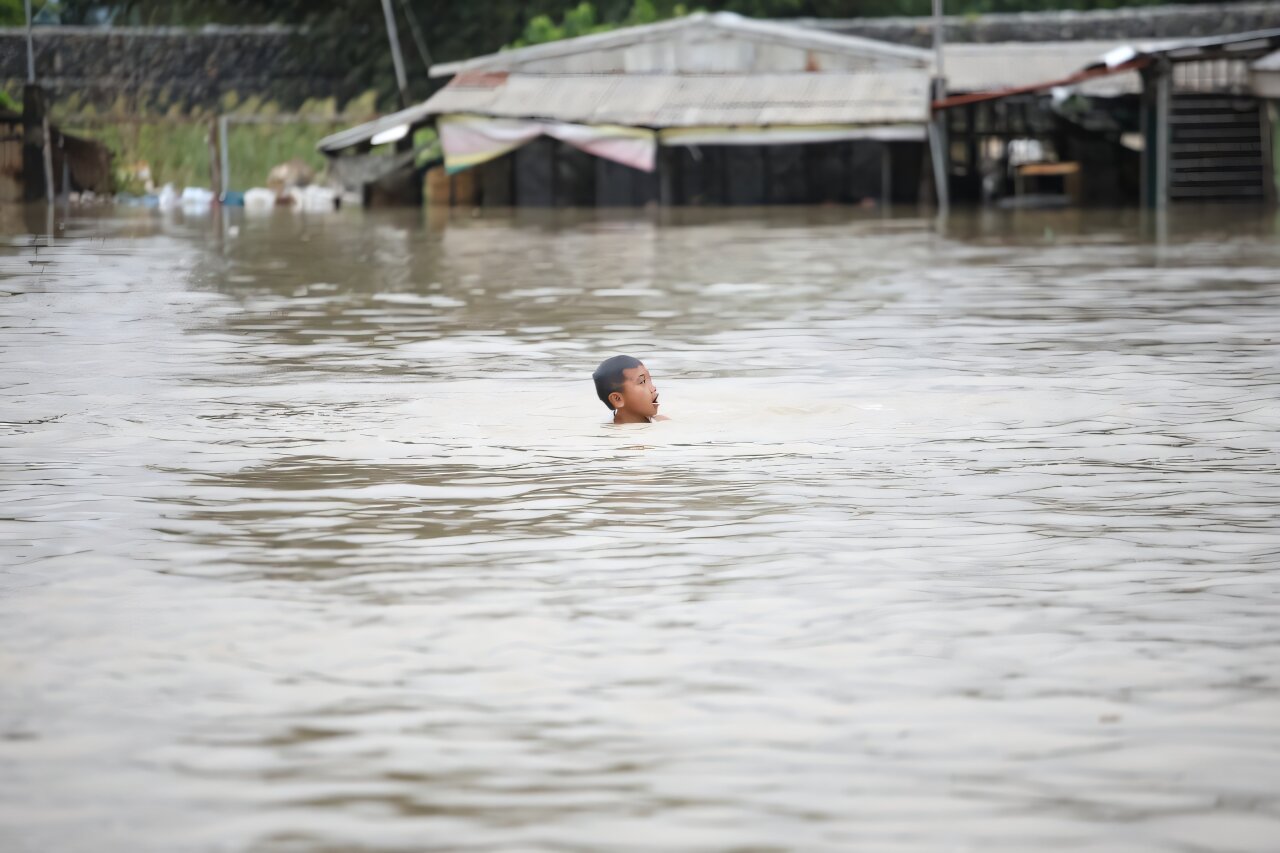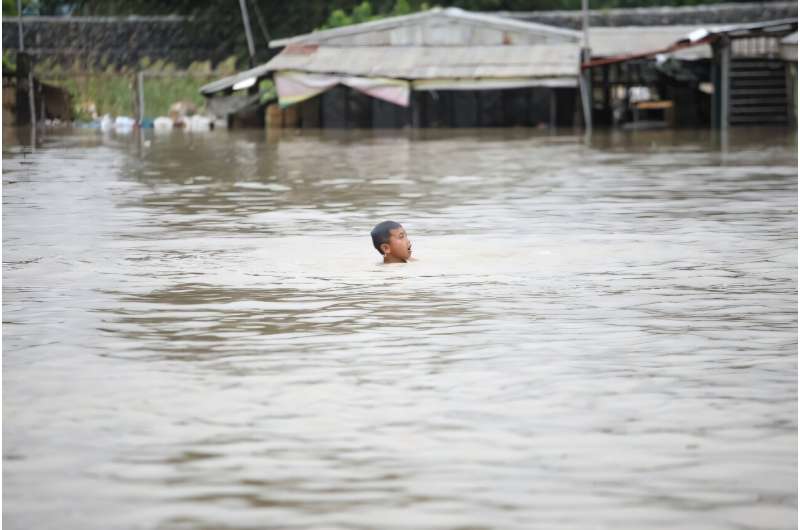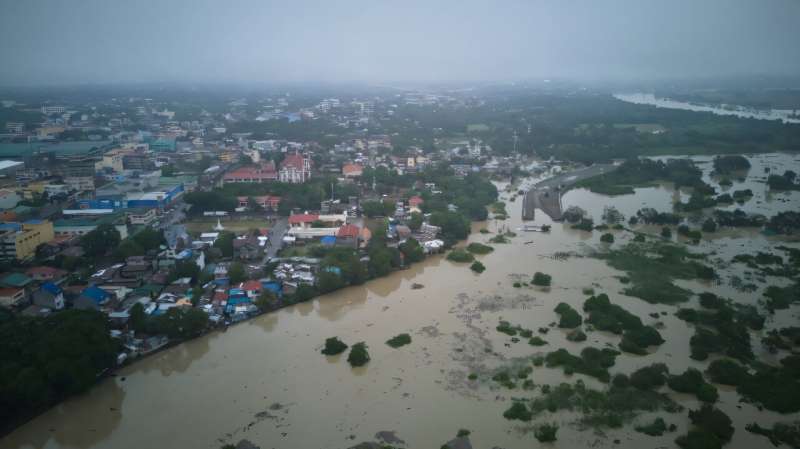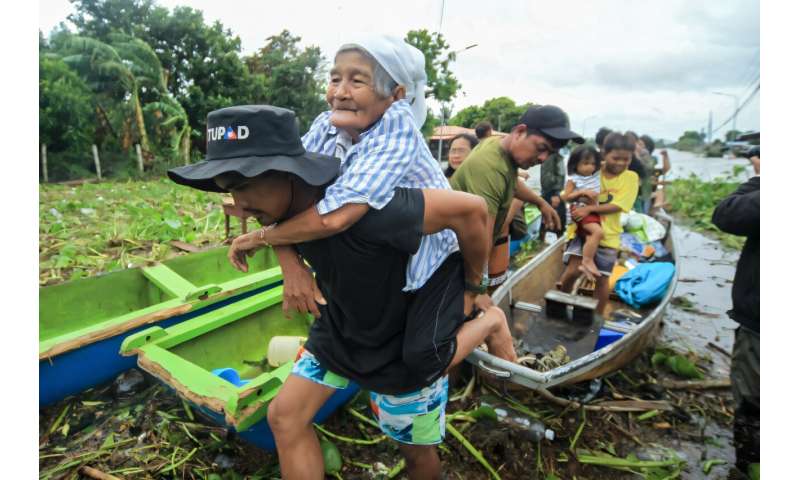

Philippine rescuers raced Thursday to reach residents stranded by fast-rising floodwaters after torrential rains from Tropical Storm Trami submerged villages and killed more than 20 people.
Schools and government offices were shuttered across the northern Philippines as the storm made landfall on the country’s main island of Luzon after first paving a trail of destruction south of the capital.
“The rain is not stopping, so the floods are going up fast. We have received countless reports asking for rescue,” Batangas province rescue official April Serrano told AFP.
A hospital in the Batangas town of Lemery, about 97 kilometers (60 miles) south of Manila, was forced to turn away patients as its wards and emergency rooms were flooded, according to the provincial health office.
On Luzon’s western coast, a surge warning was raised in Pangasinan province at around 2 pm (0600 GMT), with officials estimating waves could reach as high as two meters (6.6 feet).
In the hardest-hit Bicol region’s Naga city and Nabua municipality, rescuers were using boats to reach residents stranded on rooftops.
“They are seeking assistance through (Facebook) posts and that’s how we learned about them,” Bicol police spokeswoman Luisa Calubaquib told AFP.

“As of 7 am, we have 20 dead (throughout the Bicol region),” regional police chief Brigadier-General Andre Dizon told reporters Thursday morning, attributing most of the deaths to drowning and landslides.
According to a national weather service advisory issued at 2 pm, the storm’s eye was passing over the Ilocos region with maximum sustained wind speeds of 95 kilometers per hour at the center and gusts as high as 115 kph.
A month’s worth of rainfall
More than 30,000 people were forced to evacuate in Bicol on Wednesday, police said, as “unexpectedly high” flooding turned streets into rivers.
Lorie Dela Cruz of the state weather bureau told AFP a month’s worth of rainfall had been dumped in the region in a 24-hour window from 8 am on October 22 to the following morning, with Camarines Sur province and Albay province’s Legazpi city particularly hard hit.
-

Firefighters evacuate residents in Cagayan province, north of Manila on Thursday.
-

An elderly woman is carried by a volunteer rescuer as residents are evacuated to safer ground in Camarines Sur province.
On Thursday, rescuers were forced to halt the search for a missing fisherman after a boat sunk in the waters off Bulacan province, west of Manila, the local disaster agency told AFP.
“Although it’s now cloudy in the area, the water’s current is still strong. We were forced to stop the search and rescue,” Bulacan province rescuer Charina Lingad told AFP.
A day earlier, 11 people drowned in floodwaters in the Bicol city of Naga, according to local police chief Erwin Rebellion.
In Quezon province, southeast of the capital, an elderly woman drowned, while a toddler was also killed after falling into a flooded canal, police said.
Manila’s civil defense office reported one person was killed by a falling tree branch.
Storms and typhoons are common around the region at this time of year.
However, a recent study showed that they are increasingly forming closer to coastlines, intensifying more rapidly and lasting longer over land due to climate change.
About 20 big storms and typhoons hit the Philippines or its surrounding waters each year, damaging homes and infrastructure and killing dozens of people.
© 2024 AFP
Citation:
Philippines races to reach stranded as storm’s death toll rises (2024, October 24)
retrieved 24 October 2024
from https://phys.org/news/2024-10-philippines-stranded-storm-death-toll.html
This document is subject to copyright. Apart from any fair dealing for the purpose of private study or research, no
part may be reproduced without the written permission. The content is provided for information purposes only.

